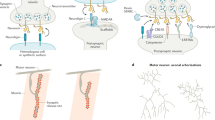Abstract.
Neuronal cells strongly depend on the control exerted by RNA-binding proteins (RBPs) on gene expression for the establishment and maintenance of their phenotype. Neuronal ELAV (nELAV) proteins are RBPs able to influence virtually every aspect of the postsynthesis fate of bound mRNAs, from polyadenylation, alternative splicing and nuclear export to cytoplasmic localization, stability and translation. They enhance gene expression through the last two, best documented activities, increasing mRNA half-life and promoting protein synthesis by a still-unknown molecular mechanism. Developmentally, nELAV proteins have been shown to act as inducers of the transition between neural stem/progenitor cells and differentiation-committed cells, also assisting these neuroblasts in the completion of their maturation program. In brain physiology, they are also the first RBPs demonstrated to have a pivotal role in memory, where they probably control mRNA availability for translation in subcellular domains, thereby providing a biochemical means for selective increase in synaptic strength.
Similar content being viewed by others
Explore related subjects
Discover the latest articles and news from researchers in related subjects, suggested using machine learning.Author information
Authors and Affiliations
Corresponding authors
Additional information
Received 15 January 2007; received after revision 10 August 2007; accepted 6 September 2007
Rights and permissions
About this article
Cite this article
Pascale, A., Amadio, M. & Quattrone, A. Defining a neuron: neuronal ELAV proteins. Cell. Mol. Life Sci. 65, 128–140 (2008). https://doi.org/10.1007/s00018-007-7017-y
Published:
Issue Date:
DOI: https://doi.org/10.1007/s00018-007-7017-y




